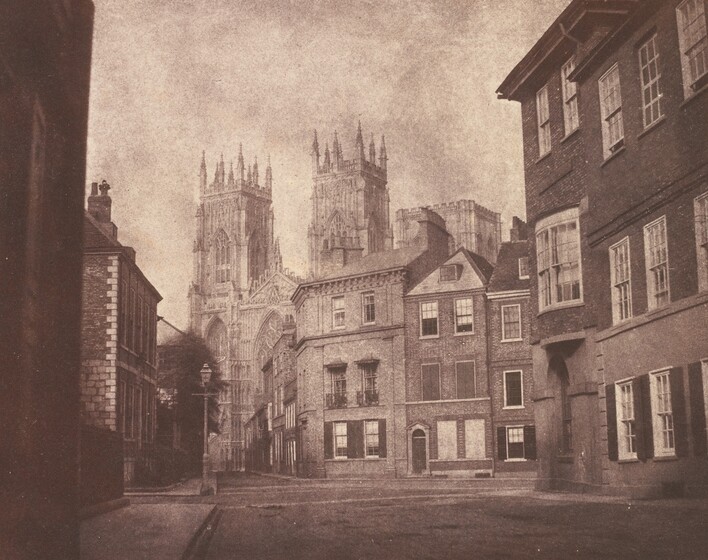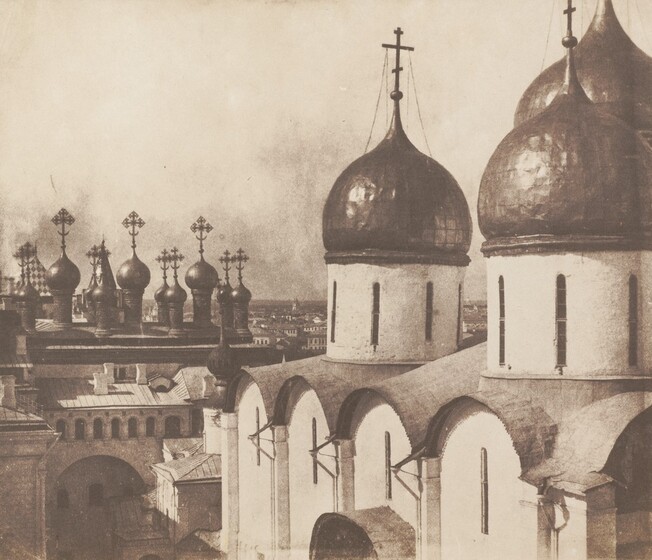The Nineteenth Century: The Invention of Photography
The Nineteenth Century: The Invention of Photography
In 1839 a new means of visual representation was announced to a startled world: photography.
Although the medium was immediately and enthusiastically embraced by the public at large, photographers themselves spent the ensuing decades experimenting with techniques and debating the nature of this new invention.
The works in this section suggest the range of questions addressed by these earliest practitioners. Was photography best understood as an art or a science?
What subjects should photographs depict, what purpose should they serve, and what should they look like?
Should photographers work within the aesthetics established in other arts, such as painting, or explore characteristics that seemed unique to the medium?
This first generation of photographers became part scientists as they mastered a baffling array of new processes and learned how to handle their equipment and material.
Yet they also grappled with aesthetic issues, such as how to convey the tone, texture, and detail of multicolored reality in a monochrome medium.
They often explored the same subjects that had fascinated artists for centuries — portraits, landscapes, genre scenes, and still lifes — but they also discovered and exploited the distinctive ways in which the camera frames and presents the world.

William Henry Fox Talbot, British, 1800–1877, A Scene in York: York Minster from Lop Lane, 1845, salted paper print, Edward J. Lenkin Fund, Melvin and Thelma Lenkin Fund, and Stephen G. Stein Fund,
A British polymath equally adept in astronomy, chemistry, Egyptology, physics, and philosophy, Talbot spent years inventing a photographicprocess that created paper negatives, which were then used to make positive prints—the conceptual basis of nearly all photography until thedigital age. Calotypes, as he came to call them, are softer in effect than daguerreotypes, the other process announced in 1839. Though steepedin the sciences, Talbot understood the ability of his invention to make striking works of art. Here the partially obstructed view of the cathedralrising from the confines of the city gives a sense of discovery, of having just turned the corner and encountered this scene.

David Octavius Hill and Robert Adamson, Scottish, 1802–1870, and Scottish, 1821–1848, David Octavius Hill at the Gate of Rock House, Edinburgh, 1843–1847, salted paper print, Paul Mellon Fund, 2007.29.27
In the mid-1840s, the Scottish team of Hill, a painter, and Adamson, a photographer who had opened the first photography studio in Edinburgh,produced some of the finest pictures made with the newly invented medium. Theirs was a true partnership of technical skills and creativity. In the four brief years of their alliance before Adamson’s untimely death, they created some three thousand portraits and pictures of local life. This picture of Hill, made at the entrance to his studio, is characteristic of the partners’ deft harnessing of light and shadow to model the subject’s face, suggesting a psychological intensity.

Albert Sands Southworth and Josiah Johnson Hawes, American, 1811–1894, and American, 1808–1901, The Letter, c. 1850, daguerreotype, Patrons’ Permanent Fund, 1999.94.1
Working together in Boston, the portrait photographers Southworth and Hawes aimed to capture the character of their subjects using the daguerreotype process. Invented in France and one of the two photographic processes introduced to the public in early 1839, the daguerreotype is made by exposing a silver-coated copper plate to light and then treating it with chemicals to bring out the image. The heyday of the technique was the 1840s and 1850s, when it was used primarily for making portraits. The daguerreotype’s long exposure time usually resulted in frontal, frozen postures and stern facial expressions; this picture’s pyramidal composition and strong sentiments of friendship and companionship are characteristic of Southworth and Hawes’s innovative approach.

Roger Fenton, British, 1819–1869, Moscow, Domes of Churches in the Kremlin, 1852, salted paper print, Paul Mellon Fund, 2005.52.1
Trained as a lawyer and painter, Fenton photographed for only eleven years, yet he was one of Britain’s most influential and skilled practitioners. The first official photographer to the British Museum, he was also one of the founders of the Photographic Society, an organization he hoped would establish photography’s importance in modern life. He constantly tested the limits of his practice, even hauling his cumbersome equipment abroad to places such as Russia, where he made this photograph as part of a remarkable series of architectural views of the Kremlin.

Roger Fenton, British, 1819–1869, Fruit and Flowers, 1860, albumen print, Paul Mellon Fund, 2005.52.4



Comentarios
Publicar un comentario